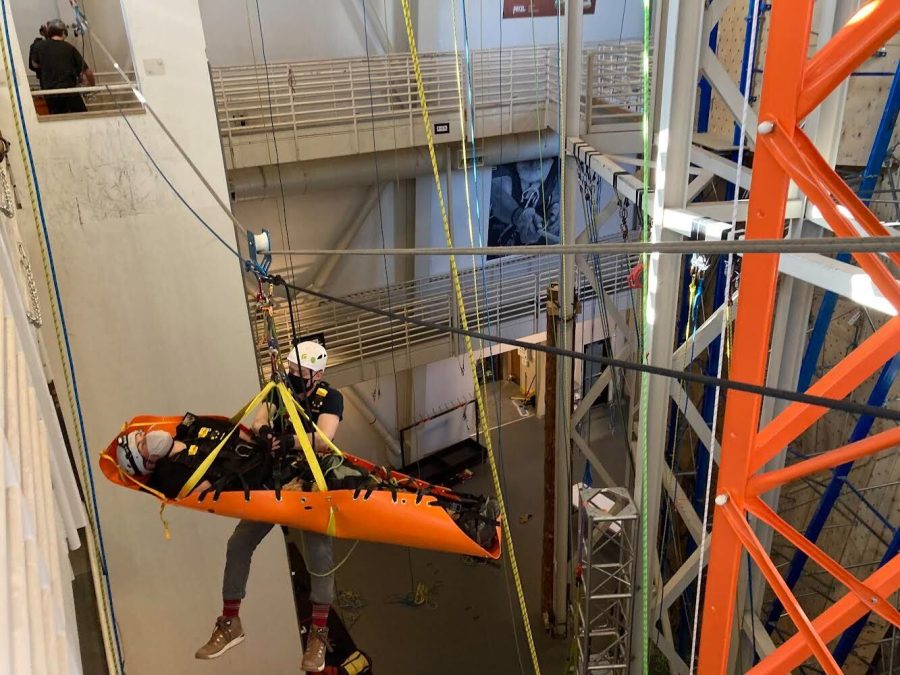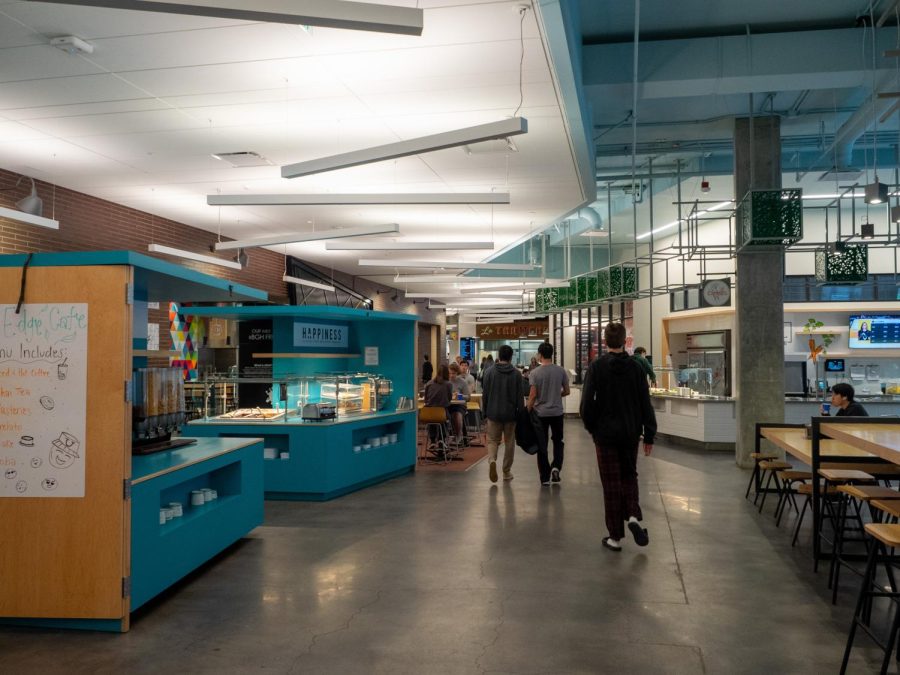Emergency Medical Services Class Focuses on Wilderness Medicine and Rescue
The students in the photo are Abe kimball and Owen Macmillan. (Courtesy of Matthew Haberman, associate instructor of Health and Kinesiology)
January 4, 2023
The Emergency Medical Services emphasis within the College of Health holds many emergency medicine courses, including one class called “Advanced High-Angle Rescue Techniques and Theory,” which focuses on rescue measures related to remote areas where ropes and harnesses are commonly used. This class is technically a half-semester course, but most students take it concurrently, moving from the basic High-Angle Rescue course to Advanced within the span of a semester.
This course is one of the four rescue courses the U offers, and students in this EMS emphasis degree have to choose two out of the four classes to take. The Fall classes offered are basic and advanced high-angle rescue with swiftwater rescue while Spring offers avalanche rescue. All medical students, regardless of their emphasis, are required to take a basic search and rescue class as a requirement for their degree, as well as more specific rescue courses.
One of the course instructors is Matt Haberman, an alumnus of the U. He began teaching as a TA in 2009, and never stopped. The formation of the wilderness medicine track came along with Haberman.
“The program we have is where students graduate with an emphasis in … emergency medical services,” Haberman said. “A couple years ago, the program director wanted to start a wilderness rescue, backcountry rescue interest area, so they wanted a rescue instructor to start that. I have a background in rescue and it kind of connected to build the program.”
The course meets Wednesday and Friday every week. On Wednesdays, they meet in a classroom setting to discuss the coursework. But on Fridays, the outdoors becomes their classroom, and the students and instructors venture into Big Cottonwood Canyon to learn and drill for six hours.
Haberman said the biggest challenge with this course is finding locations to host the activities, “because of the time of year we have to mostly train inside and for us finding locations to train inside is challenging.”
The class uses an Instagram page to document what they learn, week by week.
According to Haberman, the class this semester is quite small, with just six students enrolled.
One student is Lindsey Barber, a third-year student at the U studying health and kinesiology with an emphasis on emergency medical services and a track in search and rescue.
“I definitely think anybody who’s interested in any type of view or like outdoors things or climbing would probably enjoy this class,” she said. “I think it’s the best class that I’ve taken here so far.”
One of the most recent trainings took place at the Eccles Student Life Center Pool, with the students using litters, a kind of rescue basket, to safely get students away from the water without having to touch it. Barber said the class often goes to Cottonwood Canyon to learn how to do rescues with ropes.
“So if somebody’s like stranded on a cliff and like they were rock climbing or rappelling, and their hair gets stuck in their contraption or they start having a diabetic emergency or something like that — we would be the ones to go and rescue them,” she said.
The class involves both raising and lowering motions since both are commonly used in rescue missions.
The Spring 2023 courses can be found on the schedule which includes H EDU 4500 Avalanche Rescue Techniques and Theory and H EDU 4510 Swiftwater Rescue Techniques and Theory.
Haberman said that if students are interested in getting into emergency medicine, there is a prerequisite in either wilderness first responder or an EMT class.
“We really teach from scratch,” he said. “We don’t really need a ton of experience for people showing up in the classes.”












